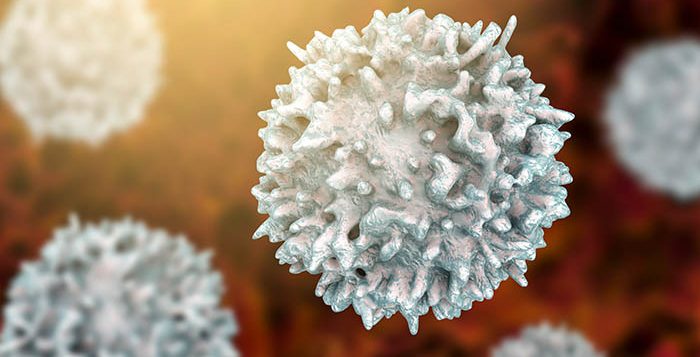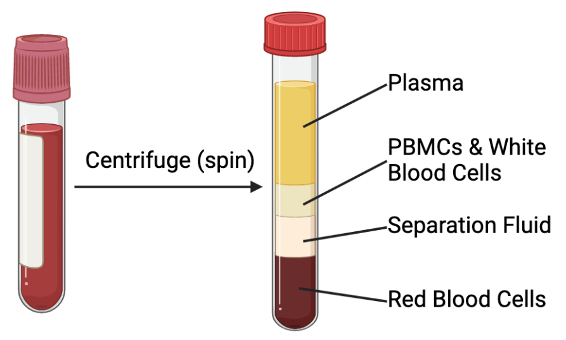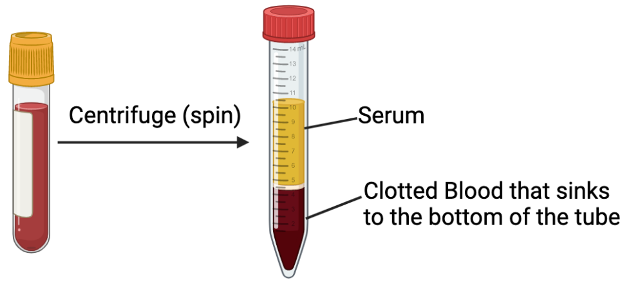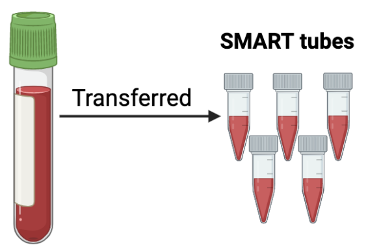
Issue 4: A Delve into Blood Processing
Why are blood samples so important?
- The Stroke IMPaCT study is researching how immune responses change after stroke, and how these changes may lead to cognitive decline.
- Blood samples are important to the Stroke IMPaCT study because they allow us to look at how the immune system is functioning at specific timepoints after a stroke.
- If we can understand what happens in the immune system after stroke, then we may be able to understand what causes the changes in cognition.
- The findings of this research will hopefully support future treatments and medical interventions.
What Blood samples are we taking? What do we do with these samples?
EDTA Tube (Red/Purple lid Tubes)
- We take 4 of these tubes.
- One of these tubes goes to the hospital pathology testing service to count the populations of different blood cells. The other 3 tubes go to the IMPaCT labs for research.
- In the Stroke IMPaCT labs we use these tubes to extract blood plasma, count white blood cells, and PBMCs.
- PBMCs are immune cells that originate in the bone marrow and circulate around the body in the blood. These are the sorts of immune cells which help fight off infections.

Serum Tube (Brown lid Tubes)
- This brown top tube contains a clotting factor (coagulant), which causes the blood to clot.
- This clotting factor allows us to separate the blood into its individual components when the blood is centrifuged (spinning the blood very fast).
- Centrifuging the blood causes the components to separate due to their mass. This separation allows us to extract the serum from the blood.

Heparin Tube (Green lid Tubes)
- This tube has the opposite effect to the serum tube as it contains an anticoagulant and lithium, which prevents the blood from clotting.
- The blood from this tube is transferred into 5 SMART tubes. These tubes are specially designed so that specific ‘mini’ immune reaction happens in each tube. These ‘mini’ immune reactions mimic what happens in the body when fighting off an infection.
- This method gives us greater insight into how the immune system is working.

Plasma vs Serum – What is the difference?
- Both plasma and serum come from the liquid part of the blood remains once the blood cells are removed.
The difference is all to do with clotting.
- Serum is the liquid that remains after the blood has clotted- stuck together, a bit like when a scab forms!
- Plasma is the liquid that remains when we don’t let the blood clot.
We analyse both plasma and serum because they have different proteins in them and can tell us about different parts of the immune system.
If you would like to learn more about blood, here are a few good websites:
- Plasma vs Serum: https://biologydictionary.net/serum-vs-plasma/
Different blood Cells and Components: https://www.khanacademy.org/science/biology/human-biology/circulatory-pulmonary/a/components-of-the-blood





0 Comments